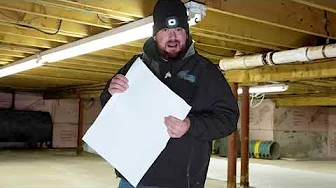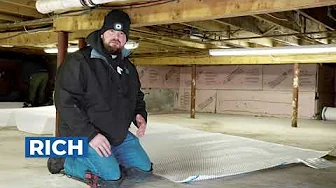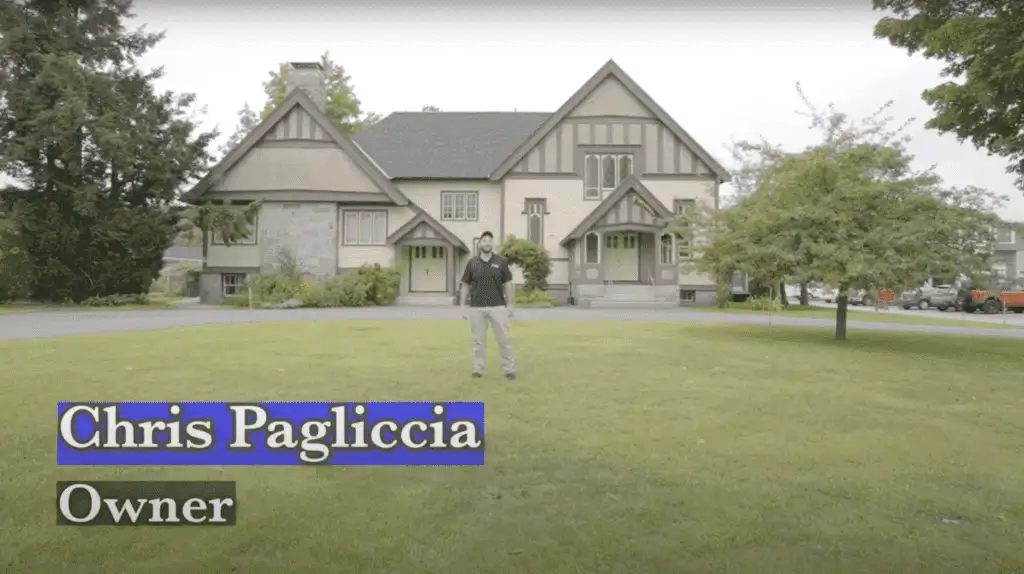Foundation Crack Repair Manchester NH
Cracks in your foundation are never something to ignore. They can compromise your home’s structural integrity, lead to water leaks, and cause long-term damage if left unaddressed. For homeowners in Manchester, NH, understanding what causes foundation cracks and how to repair them is essential for maintaining the safety and stability of your property.
Real People - Real Great Results
Crawl Space Video Playlist
The Common Causes of Foundation Cracks
Foundation cracks don’t just appear out of nowhere—there’s almost always a culprit that sets the damage in motion. In Manchester, NH, where weather conditions and soil types vary widely, understanding these causes can save you from turning a small crack into a monumental headache. Here’s a breakdown of what’s likely to be attacking your foundation:
- Soil Movement: Your foundation rests on the soil, and when that soil can’t make up its mind, trouble isn’t far behind. Heavy rains swell the earth, while dry spells shrink it back down, tugging at your foundation like a stubborn child pulling on your sleeve. This constant push-and-pull puts stress on the structural base until cracks form as a cry for help. It’s nature doing its thing—but at your expense.
- Water Damage: Water can do two things to your foundation, and neither of them is good. Poor drainage systems funnel rainwater toward your home instead of away from it, soaking the soil and eroding your foundation’s strength over time. Frost heaves in Manchester’s brutal winters don’t help either—they’re like Mother Nature’s slow-motion wrecking ball.
- Settling: No house sits perfectly still. As time passes, your home is going to settle. The problem begins when that settling isn’t uniform—when one corner of the house decides it’s had enough and starts sinking faster than the rest. The added stress doesn’t just stay localized. It radiates through the foundation in the form of cracks, often starting small before they grow into something worth losing sleep over.
- Temperature Changes: Let’s face it—New England winters are famous for being fierce. The freeze-thaw cycles are relentless here, and they wreak havoc on construction materials. Concrete expands and contracts with the season, and under repeated punishment, it eventually cracks. These aren’t cosmetic issues; they’re functional failures that can lead to leaks and larger structural problems over time.
- Construction Defects: Sometimes, it’s not soil or weather at fault—it’s human error. Poor workmanship during construction can result in weak spots in your foundation right from the start. Whether it’s inferior materials, rushed timelines, or just plain negligence, these flaws often lie dormant for years. But as the structure settles and ages, cracks emerge and make themselves known like ghosts of shortcuts past.
Understanding these causes is important because not all foundation cracks are created equal. Knowing what’s behind the damage can inform your next move—whether it’s a simple DIY patch-up or a call to Manchester’s top professionals. Either way, don’t wait for the cracks to “work themselves out.” Spoiler alert: they won’t.
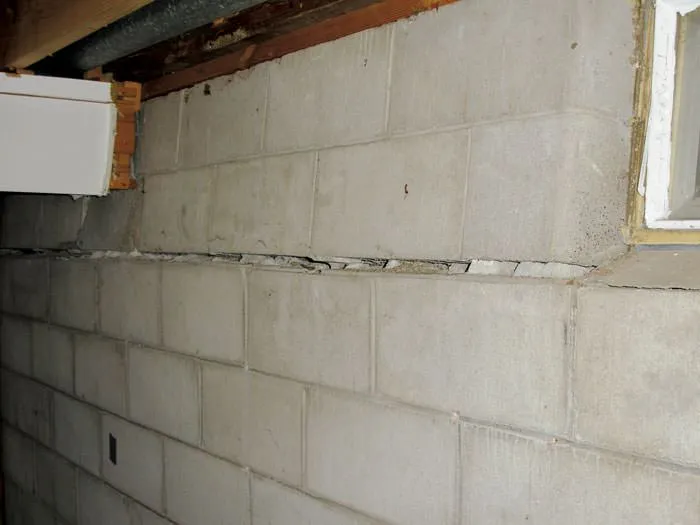
Types of Foundation Cracks and What They Mean
Not all cracks are created equal. Some are harmless, others are an alarm bell. Knowing which is which will save you time, money, and unnecessary worry. Here’s a no-nonsense guide to the common types of foundation cracks you’ll encounter in Manchester, NH, and what they say about your home’s health:
- Hairline Cracks: These are the little cracks that show up in new foundations. Concrete shrinks as it cures—it’s normal, like a pair of jeans fresh out of the dryer, only slower. Hairline cracks are typically not a structural issue, but don’t get complacent. Sealing them now keeps water out and stops them from getting worse later. Think of it as putting a lid on a simmering pot.
- Horizontal Cracks: These are the bad guys. Horizontal cracks usually mean heavy soil pressure or water buildup is shoving against your foundation like a linebacker’s shoulder press. This could lead to bowing walls or even collapse in extreme cases. These cracks aren’t an “I’ll deal with it next year” problem—they need professional intervention yesterday.
- Vertical Cracks: Vertical cracks are the “meh” of foundation cracks. Often caused by normal settling, these are common and usually not catastrophic. That said, even small vertical cracks can become water entry points. Seal them up before Manchester’s next big rainstorm makes your basement resemble a kiddie pool.
- Diagonal Cracks: Diagonal cracks are like vertical cracks, but with a twist—literally. They’re often caused by uneven settling (thanks, unpredictable New England soil). If one end of the crack is wider than the other, you’re potentially looking at a more serious situation. You might need a pro for further inspection, especially if the gap is widening like a slow-motion yawn.
- Stair-Step Cracks (in Brick or Block Foundations): If your foundation is made of bricks or blocks, stair-step cracks are your foundation’s way of telling you, “Help!” These usually occur because of settling issues or pressure from the surrounding soil. If the steps are clean and tight, you’ve caught it early. If the gaps are wide enough to slide a coin—or worse, a pencil—through, it’s time to pick up the phone and call an expert.
Foundation cracks aren’t one-size-fits-all, and ignoring the signs can cost you more in the long run. You don’t have to be a structural engineer to take a hard look and figure out what’s going on. A little attention now can prevent a giant headache in the future.
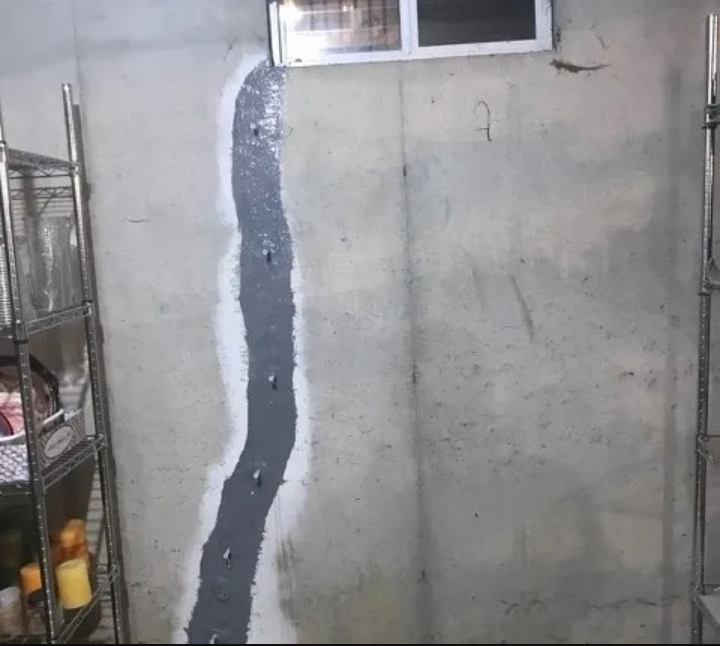
Why Foundation Crack Repair Is Essential
A cracked foundation isn’t just a cosmetic problem; it’s a red flag that demands attention. Ignored cracks have a way of turning small inconveniences into big-ticket nightmares. The structural integrity of your home—the thing keeping your walls straight and your floors level—relies on a stable foundation. When that foundation is compromised, everything above it is at risk.
First, there’s water intrusion. Even tiny cracks can act like straws, sucking in moisture from the surrounding soil. Water in your basement doesn’t just mean puddles; it means mold growth, damp air, and the kind of musty smell that no dehumidifier can fully erase. Worse, it invites repeated cycles of freezing and thawing during Manchester winters, which can force cracks to widen like a wedge driven deeper into a log.
Then there’s the creeping threat of instability. Cracks—no matter how small—signal stress. Over time, that stress won’t magically fix itself; it builds. What starts as a hairline fissure could evolve into shifted walls, slanted floors, or worse, a compromised structural load. At best, you’ll deal with costly repairs later. At worst, you’re facing a potential safety hazard, with repairs spiraling into tens of thousands of dollars.
And let’s not forget about your home’s value. Foundation issues scare off buyers faster than anything else. Even if you’re years away from selling, failing to fix visible cracks sends a clear message: this property comes with problems. A cracked foundation creates a ripple effect, making your home harder to insure, harder to finance, and harder to sell. In real estate, first impressions matter, and an unaddressed foundation flaw is glaring.
In short, foundation repair isn’t optional if you’re serious about preserving your home’s safety, value, and livability. The quicker you act, the smaller the problem—and the repair bills—will be. Procrastination only compounds the cost. Don’t wait until you’re ankle-deep in water or trying to close a door that suddenly doesn’t align. Foundation cracks are a call to action; answer it.
Professional Methods for Foundation Crack Repair
When DIY solutions aren’t enough, professional repair methods step in to handle more complex or severe foundation cracks. In Manchester, NH, contractors rely on proven techniques that address not just the symptom—the crack—but also the root cause. Here’s a breakdown of the most effective methods professionals use:
Epoxy Injection
- When It’s Used: Structural cracks that demand more than superficial attention.
- How It Works: Epoxy resin is injected into cracks, effectively bonding the damaged concrete back together. Unlike surface-level patches, this method restores the foundation’s original strength.
- Why It’s Effective: It doesn’t just seal the crack—it reinforces the structure, stopping further degradation. However, it’s not a solution for cracks caused by ongoing issues, like active soil movement.
Carbon Fiber Straps
- When It’s Used: Horizontal cracks or bowing walls caused by excessive soil pressure.
- How It Works: Carbon fiber straps are attached to the foundation wall using epoxy. Once secured, they act like steel reinforcement but without the bulk.
- Why It’s Effective: Lightweight yet incredibly strong, carbon fiber prevents further wall movement without intrusive construction. Plus, it’s relatively quick and cost-effective to install.
Wall Anchors
- When It’s Used: Severe cases of bowing or tilting walls due to external soil forces.
- How It Works: Metal plates are positioned in the soil outside your foundation and connected to anchors on the inside wall via steel rods. The system pulls the foundation wall back into place while countering ongoing pressure.
- Why It’s Effective: This method is particularly useful for stabilizing large portions of compromised walls. It’s a permanent fix for soil-related damage but requires excavation to install properly.
Underpinning
- When It’s Used: When the foundation is settling or sinking unevenly.
- How It Works: Support piers or pilings are driven deep into stable soil or bedrock beneath the foundation. These supports redistribute the home’s weight to more secure ground.
- Why It’s Effective: Underpinning isn’t a cosmetic repair—it’s a structural reset. It’s the go-to solution for serious subsidence issues and ensures long-term stability for the entire foundation.
Hydraulic Cement and Waterproofing
- When It’s Used: Non-structural cracks that still pose a water intrusion risk.
- How It Works: Hydraulic cement is applied to cracks to seal them and hardens quickly to block water. Additional waterproof coatings are often applied to the foundation wall for extra protection.
- Why It’s Effective: This dual approach both patches the immediate problem and reduces the risk of future water-related damage.
Each of these methods is tailored to specific types of damage, and a reliable contractor in Manchester, NH, will carefully assess your foundation to recommend the best course of action. While these repairs can require an upfront investment, they’re essential for ensuring the long-term health of your home—because ignoring a foundation issue isn’t an option anyone can afford.
Preventing Future Foundation Cracks
When it comes to maintaining your foundation, defense is the best offense. Addressing existing cracks is only half the battle—taking straightforward steps to prevent new ones is what keeps your home truly secure. Here’s how you can reduce the risk without overcomplicating things:
- Improve Drainage: If water hugs your foundation, it’ll only exploit weaknesses over time. Make sure gutters and downspouts are functional and carry water at least 10 feet away from your home. No splash zones, no excuses.
- Grade the Landscape: Flat or poorly graded land is an open invitation for water to pool around your foundation. A subtle slope—around 6 inches of drop for the first 10 feet from your house—is all it takes. Think of it as building a moat, but in reverse.
- Control Moisture Levels: Expanding and contracting soil is a foundation’s worst enemy. During dry spells (hello, New England summers), use soaker hoses to maintain consistent soil moisture around your home. It takes minutes and saves headaches down the line.
- Install a Sump Pump: Water in your basement isn’t just inconvenient—it’s an early warning system. A sump pump doesn’t just manage this; it eliminates the issue before it snowballs into foundation damage. Consider it cheap insurance against bigger problems.
- Regular Inspections: Foundation issues rarely appear overnight. Make a habit of walking around your home each spring and fall looking for cracks, uneven gaps, or signs of shifting. An hour of vigilance will save you weeks—or months—of expensive repair work later.
Prevention isn’t glamorous, but it works. Small, consistent actions keep cracks from forming and help you sleep better at night. Manchester weather? Soil shifts? Bring it on.
DIY vs. Professional Foundation Crack Repair
DIY Repairs for Minor Cracks
Let’s be honest: not every crack in your foundation requires a phone call to an expert or a mortgage-sized repair bill. If you’re dealing with minor hairline cracks, you might be able to tighten your toolbelt and take care of things yourself. DIY foundation crack repair kits are available at most hardware stores and come equipped with everything you need to handle smaller, non-structural issues. Common materials include epoxy, polyurethane foam, and hydraulic cement, each designed to seal and waterproof the cracks while preventing further damage.
Here’s a stripped-down process to get it done:
- Clean the Crack: Get rid of debris, dust, or loose concrete. A stiff brush or even a vacuum can work here. The cleaner the crack, the better your repairs will bond.
- Prep the Sealant: Depending on the type of crack and the kit, you may need to mix or load the sealant into a caulking gun.
- Seal the Crack: Slowly and methodically fill the crack with your sealant. Make sure it’s completely filled to avoid future leaks.
- Smooth It Out (Optional): For aesthetics, use a trowel or putty knife to smooth the surface and blend the repair into the surrounding area.
While this process sounds easy enough, keep in mind that these fixes are more about prevention than restoration. Filling a crack won’t magically fix underlying issues like soil pressure or settling, but it might buy you some time and peace of mind—especially when water infiltration is your main concern.
When To Call a Professional
Unfortunately, not all cracks are created equal. Sometimes, a small fissure is whispering about a much bigger problem under the surface. If you notice cracks wider than a quarter-inch, horizontal or stair-step patterns, or persistent moisture despite your best DIY efforts, it’s time to bring in someone who knows what they’re doing. Professionals have the tools—and, let’s face it, the experience—you probably don’t.

Signs you should stop DIY-ing and call an expert include:
- Cracks that grow quickly or keep reappearing after previous repairs.
- Horizontal cracks, which can signal excessive soil pressure pushing against your foundation walls.
- Bowing, tilting, or sinking foundation walls (yes, that’s as bad as it sounds).
- Water consistently seeping into your basement even after sealing.
Here’s the bottom line: tackling minor cracks is great for a weekend project, but don’t let stubborn DIY optimism stand between you and the structural integrity of your home. If there’s even a hint that something deeper is going on, it’s worth getting a pro to take a look before the problem escalates into a far costlier repair—or worse.
Choosing the Right Foundation Repair Contractor in Manchester NH
When it comes to foundation repair, not all contractors are created equal. The wrong choice can leave you with subpar work and even bigger problems down the line. The right contractor, on the other hand, can resolve the issue efficiently, professionally, and permanently. Here’s what you need to know to pick a reputable foundation repair expert in Manchester, NH.
Look for Proven Experience
Foundation repair is not the place for trial and error—or for someone “figuring it out as they go.” Look for contractors with years of experience specifically in foundation work. Those who have seen it all—from small hairline cracks to major structural damage—are more likely to diagnose your issues accurately and recommend the best course of action. Manchester’s unique soil conditions and weather patterns can influence foundation problems, so choose a contractor who knows the local terrain.
Read Local Reviews
Online reviews can be your best resource. Check platforms like Google, Yelp, or Angie’s List for contractors with strong feedback from homeowners in the Manchester area. Focus on patterns in the reviews. Are they known for showing up on time? Finishing projects within budget? Listen to the experiences of people who faced foundation issues similar to yours and see who they trusted to fix them.
Verify Licenses and Insurance
This is non-negotiable. A legitimate foundation repair contractor will be fully licensed and insured. Ask to see their paperwork before signing anything. Licensing ensures they meet professional and legal standards, while insurance protects you in case of accidents or unforeseen complications during the repair process. If a contractor hedges on this, move on.
Insist on Transparency
A good contractor doesn’t just hand you a quote and tell you to take it or leave it. They’ll explain the problem in plain language, outline the repair options, and give a clear breakdown of costs. Beware of anyone who refuses to walk you through their proposed solution or tries to strong-arm you into agreeing on the spot. Transparency isn’t just about trust—it ensures you know exactly what you’re getting for your money.
Prioritize a Warranty
Reputable contractors stand by their work. Look for companies that offer warranties on their repairs. This shows they’re confident in the long-term effectiveness of their methods. Be sure to read the fine print and understand the terms of the warranty—how long does it last, and what does it cover?
Be Wary of Red Flags
While searching for a contractor, watch out for warning signs, such as:
- Unrealistically low bids: If it seems too good to be true, it probably is. Lowball quotes may mean they’re cutting corners or planning to hit you with unexpected charges later.
- No physical address: If they can’t point to a local office, they might disappear the moment you hand over your payment.
- High-pressure sales tactics: Ethical contractors let their quality speak for itself, rather than bullying you into quick commitments.
Get Multiple Quotes
Foundation repair isn’t something you want to skimp on, but that doesn’t mean you shouldn’t shop around. Reach out to at least three contractors for estimates. Use this as an opportunity to ask questions and evaluate their professionalism. The best contractor isn’t just the one offering the best price—it’s the one you feel confident will do the job right.
Your Foundation Deserves the Best
In a city like Manchester, NH, where freeze-thaw cycles and soil movement can wreak havoc on foundations, you need a contractor who knows this terrain like the back of their hand. With the right combination of local expertise, a solid reputation, and ethical business practices, they’ll give your home the care and stability it needs. Do the legwork upfront, and you’ll avoid headaches—and costly mistakes—down the road.
Conclusion
Foundation problems are like smoke signals from your home—they demand attention, and fast. Ignored cracks can snowball into costly repairs and compromise safety in ways you don’t want to experience firsthand. Whether it’s patching hairline cracks with a DIY approach or calling in seasoned professionals for structural issues, the key is swift action. Foundation crack repair isn’t just about fixing yesterday’s problems; it’s about fortifying your home for tomorrow. In a place like Manchester, NH, where weather and soil love to test foundations, staying proactive isn’t just smart—it’s essential.
Reviews from Happy Customers
Our top priority is customer satisfaction, and we work closely with clients to understand their unique needs and goals.




